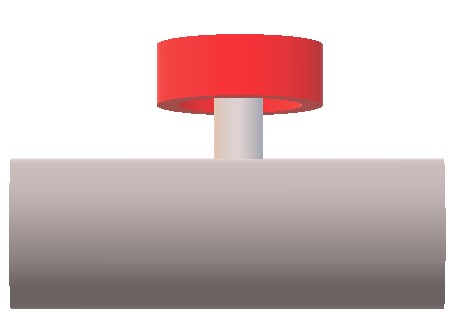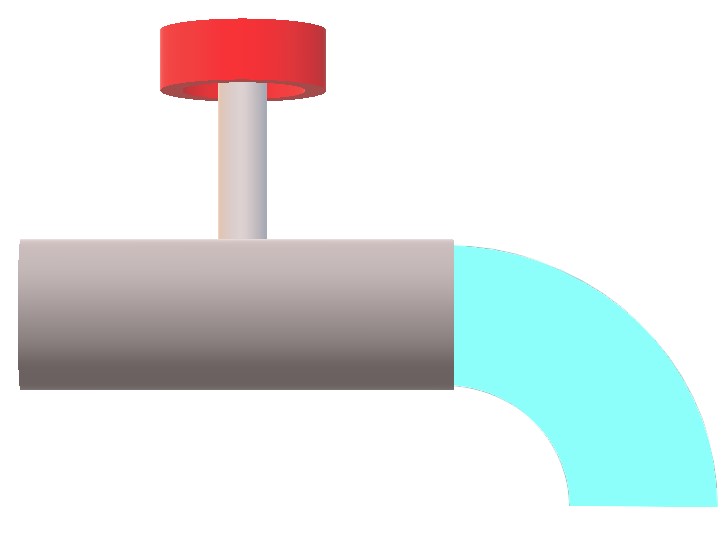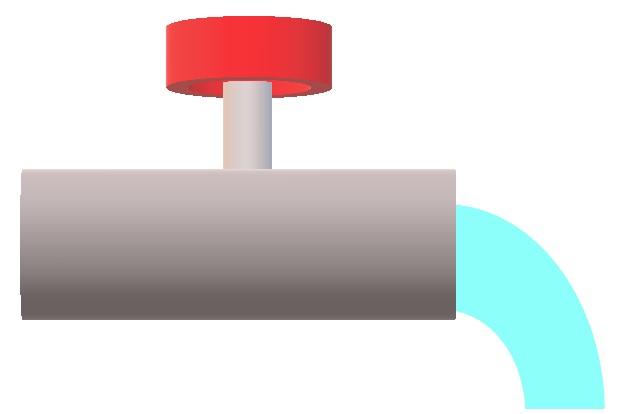FAQs
Brainboxes provides a .NET API which allows easy integration of Brainboxes Remote IO modules into your Windows software applications.
Requirements
- Windows 2000 or later
- Visual Studio 2005 or later – A free edition of the latest version can be download from Microsoft’s website
- .NET 2.0 or later – the latest version is installed with Visual Studio
- Brainboxes Analog Remote IO Module (e.g. ED-549, ED-560 etc)
- Basic C# Programming Knowledge
- The Brainboxes.IO API – download here
C# Code Samples
Example 1: Variable Light Intensity Controller
This sample code will demonstrate a simple variable brightness bulb controlled by a dial.
The dials are connected to ED-549 (analog input device) and the variable brightness bulbs are connected to ED-560 (analog output device).
using System.Linq;
using Brainboxes.IO;
namespace Analog_io_example_application
{
//This sample code will demonstrate a simple variable brightness bulb controlled by a dial
//The dials are connected to ED-549 analog input device
//The variable brightness bulbs are connected to ED-560 analog output device
class Program
{
static IOList lights; //declared here to enable using 'lights' object outside the main program
static void Main(string[] args)
{
using (EDDevice edIn = new ED549(new TCPConnection("192.168.0.77")))//ip address of ED-549
{
using (EDDevice edOut = new ED560(new TCPConnection("192.168.0.89")))//ip address of ED-560
{
edIn.Connect();
edOut.Connect();
edOut.Label = "Lights"; //give a label, useful for debugging
//first 3 outputs are connected to variable outputs (lights with intensity)
//use the default output full scale range of 0-10V (note: can be configured to 0-20mA or 4-20mA also)
//use the default output format of 'Engineering Units'
lights= edOut.AOutputs.Take(3).AsIOList();
//initialise lights off
lights.AValues = 0;
edIn.Label = "Light intensity controller";//give a label useful for debugging
//first 3 inputs are connected to dials
//use the default full scale range of -10V -> +10V (note: can be configured to many other ranges)
IOList dials = edIn.AInputs.Take(3).AsIOList();
dials.Label = "Console Dials"; //optionally label group, useful for debugging
Console.WriteLine("Dial 0 current value " + dials[0].Value);
Console.WriteLine("Dial 1 current value " + dials[1].Value);
Console.WriteLine("Dial 2 current value " + dials[2].Value);
//writing event handler function
//when the light intensity is above a target level, prompt the user
AIOLineChangedEventHandler lightsTooBrightEventHandler = (line, device, value, changeType) =>
{
//previous sampled value was below the target value and current sampled value is above the target value
if(changeType == AIOChangeTypes.Above)
{
Console.WriteLine("Light is too bright on output " + line.IONumber);
}
};
//attaching function to event handler
AIOLineChangedEventHandler dialTurnedEventHandler = DialTurnedEventHandlerFunction;
AIOLineChangedEventHandler optimumBrightnessLevelEventHandler = OptimumBrightnessLevelEventHandlerFunction;
//subscribe to event handler on lights
//event triggered when the light output touches 3 or 5
lights.SubscribeToTargetRangeEvent(ref optimumBrightnessLevelEventHandler, 4, 1);
//event triggered when the light output touches 6.5
lights.SubscribeToTargetEvent(ref lightsTooBrightEventHandler, 6.5);
//subscribe to event on dials
dials.SubscribeToDeltaEvent(ref dialTurnedEventHandler, 1);//event triggered when the delta changes by 1
Console.WriteLine("Press any key to continue...");
Console.ReadKey();
}
}
}
//event handler function outside the main program
//when the dial is turned by greater than delta value update the corresponding light output
private static void DialTurnedEventHandlerFunction(IOLine line, EDDevice device, double value, AIOChangeTypes changeType)
{
Console.WriteLine("Analog input " + line.IONumber + " changed by greater than the delta of " + value);
//turn lights to new output value for the corresponding input
lights[line.IONumber].AValue = line.AValue * 0.25;//0.25 is a conversion factor
}
//when the light intensity enters or exits the optimum brightness level, prompt the user
private static void OptimumBrightnessLevelEventHandlerFunction(IOLine line, EDDevice device, double value, AIOChangeTypes changeType)
{
//previous sampled value was outside the delta range of the target value and
//current sampled value is inside the delta range of the target value
if(changeType == AIOChangeTypes.Enter)
{
Console.WriteLine("Entering optimum brightness level on output " + line.IONumber);
}
//previous sampled value was inside the delta range of the target value and
//current sampled value is outside the delta range of the target value
else if (changeType == AIOChangeTypes.Exit)
{
Console.WriteLine("Exiting optimum brightness level on output " + line.IONumber);
}
}
}
}
Example 2: Water flow feedback control system
This more complicated example shows a feedback loop on a flow rate pipe. A pipe has water flow through it, which needs to be maintained at 3.0 m/s (meters/second).
The pipe has a flow rate meter and a valve to control the flow rate. When the valve is fully opened the flow rate is at the pipes current flow rate (normally 5.0 m/s). When the valve is fully closed the flow rate is 0.0 m/s. The flow meter outputs 4-20mA into a brainboxes ED-549 analog input device. The flow rate meter outputs 4-20mA, for flows between 0.0 m/s and 5.0 m/s.
The valve is controlled using a -10V to +10V range connected to a brainboxes ED-560 analog output device. This example shows a method to maintain the flow rate at 3.0 m/s. The flow valve is a -10V to + 10V input device, where -10V closes the value completely and +10V opens the valve completely.
When valve is fully closed:
Flow rate when the valve is fully closed: 0 m/s
Flow meter output when the valve closed: 4 mA
Input voltage to close the valve completely: -10V

When valve is fully open:
Flow rate when the valve is fully open: 5 m/s
Flow meter output when the valve fully open: 20 mA
Input voltage to open the valve completely: +10V

Valve at optimum speed:
Required optimum flow rate required: 3 m/s

using System;
using Brainboxes.IO;
namespace Analog_demo_feedback_control_system
{
class Program
{
static ED560 edOut;
static double flowRateConversionFactor = 5.0d / (20 - 4);
static double flowRateOffset = -1.25d;
static void Main(string[] args)
{
using (ED549 edIn = new ED549(new TCPConnection("192.168.0.77")))
{
using (ED560 edOut = new ED560(new TCPConnection("192.168.0.89")))
{
edOut.Connect();
edIn.Connect();
//optionally provide a label, useful for debugging
IOLine flowMeter = edIn.AInputs[0];
flowMeter.Label = "Flow Meter";
IOLine flowValve = edOut.AOutputs[0];
flowValve.Label = "Flow Valve";
// define events handlers:
//attaching function to event handler by referencing a function outside of this function block
AIOLineChangedEventHandler maintainFlowRateHandler = MaintainFlowRateHandlerFunction;
//or define a event within this 'main' function block
AIOLineChangedEventHandler flowRateChangedEvent = (line, device, value, changeTypes) =>
{
//for every change of 0.1 m/s update the console to display the current flow rate in m/s
Console.WriteLine("The Flow rate is: " + (line.AValue * flowRateConversionFactor + flowRateOffset) + " m/s");
};
//subscribe to event handlers:
//for every change of 0.1m/s update the console to display the current flow rate in m/s
flowMeter.SubscribeToDeltaEvent(ref flowRateChangedEvent, ConvertToMilliAmps(0.1));
//the aim of the system is to maintain a flow rate of 3 m/s
//monitor the flow rate, and alter the valve whenever the flow falls outside the target value by 0.2 m/s
//when the flow hits 2.8 m/s its going too slow, open the valve (a bit!!!)
//when the flow hits 3.2 m/s its going too fast, close the valve (a bit!!)
flowMeter.SubscribeToTargetRangeEvent(ref maintainFlowRateHandler,
ConvertToMilliAmps(3),
ConvertToMilliAmps(0.2));
}
}
Console.WriteLine("Press any key to continue...");
Console.ReadKey();
}
//to find the flow meter input(in mA) for a given flow rate (in m/s)
private static double ConvertToMilliAmps(double flowRate)
{
return ((flowRate - flowRateOffset) / flowRateConversionFactor);
}
//as the flow rate nears the target value adjust the valve to maintain flow rate at 3 m/s
private static void MaintainFlowRateHandlerFunction(IOLine line, EDDevice device, double value, AIOChangeTypes changeTypes)
{
//difference between current input and optimum value in mA
//multiply difference by conversion factor and add it to the exisiting output value
edOut.AOutputs[0].AValue = (ConvertToMilliAmps(3) - line.AValue) * (20 / 16) + edOut.AOutputs[0].AValue;
}
}
}
Related FAQs
- How can I wire my ED-549 Analogue Input device?
- How do I control my Remote IO Device from Windows
- How do I create a windows forms application for Brainboxes Remote IO in C#?
- How do I test my Remote IO Module using a terminal console?
- How do I use C# to communicate with my Remote IO Module?
- How do I use C# to control my Ethernet to Serial device?
- How do I use Node-RED to read Analog Input Module ED-549 with Modbus TCP?
- How do I use Node-RED to control Analog Output Module ED-560 with Modbus TCP??
- How do I use Visual Basic (VB) to communicate with my Analog IO Module?
